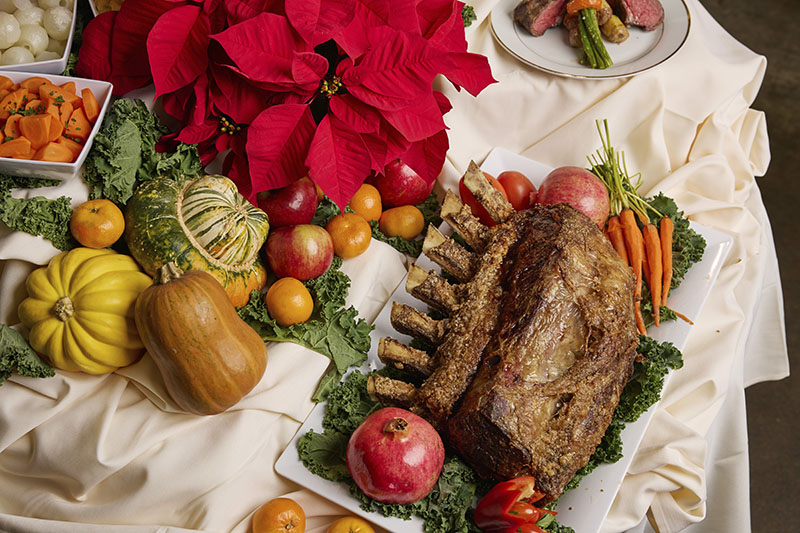’Tis the season of entertaining, and while the holidays may be a time of jolly good fun for some, they can also be stressful for those planning to host large-scale events at home. From cocktail parties to family feasts, the food and drink enjoyed around the holidays involve a lot of moving parts. For a primer on how to make this most festive time of year a little bit more joyful, we checked in with Christopher Riley, co-owner of Beverly-based Creative Catering.
Riley, who has worked for Creative Catering for 14 years and who purchased the company with his business partner, Daniel Murphy, in 2019, has plenty to say on the matter of holiday entertaining. But first things first: Don’t overwhelm the bar during that holiday cocktail party, he says. “Give them something to offer guests at the door as they’re coming in,” he says. Signature cocktails or glasses of sparkling wine, poured in advance, are a great way to divert guests from a bar that can easily become overwhelmed, he says. Or, if you don’t have enough hands available, pour a few glasses of wine beforehand and set them out on a tray placed near the bar so that arriving guests can grab them upon arrival.
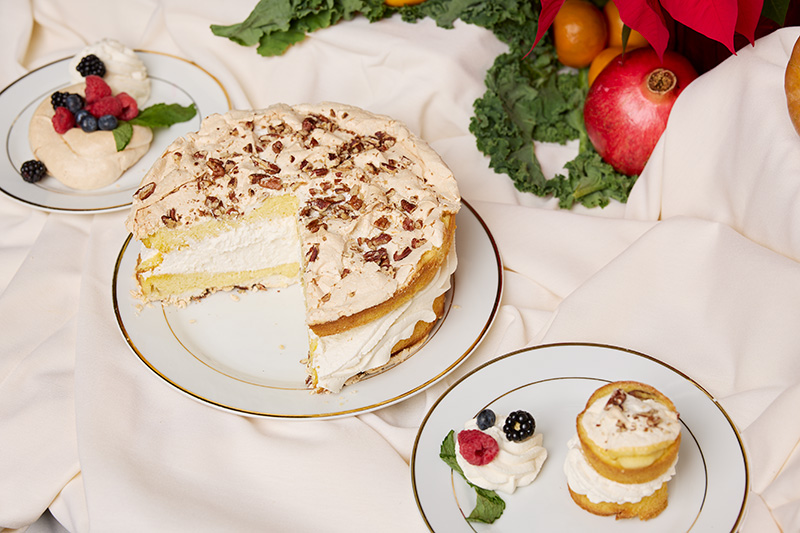
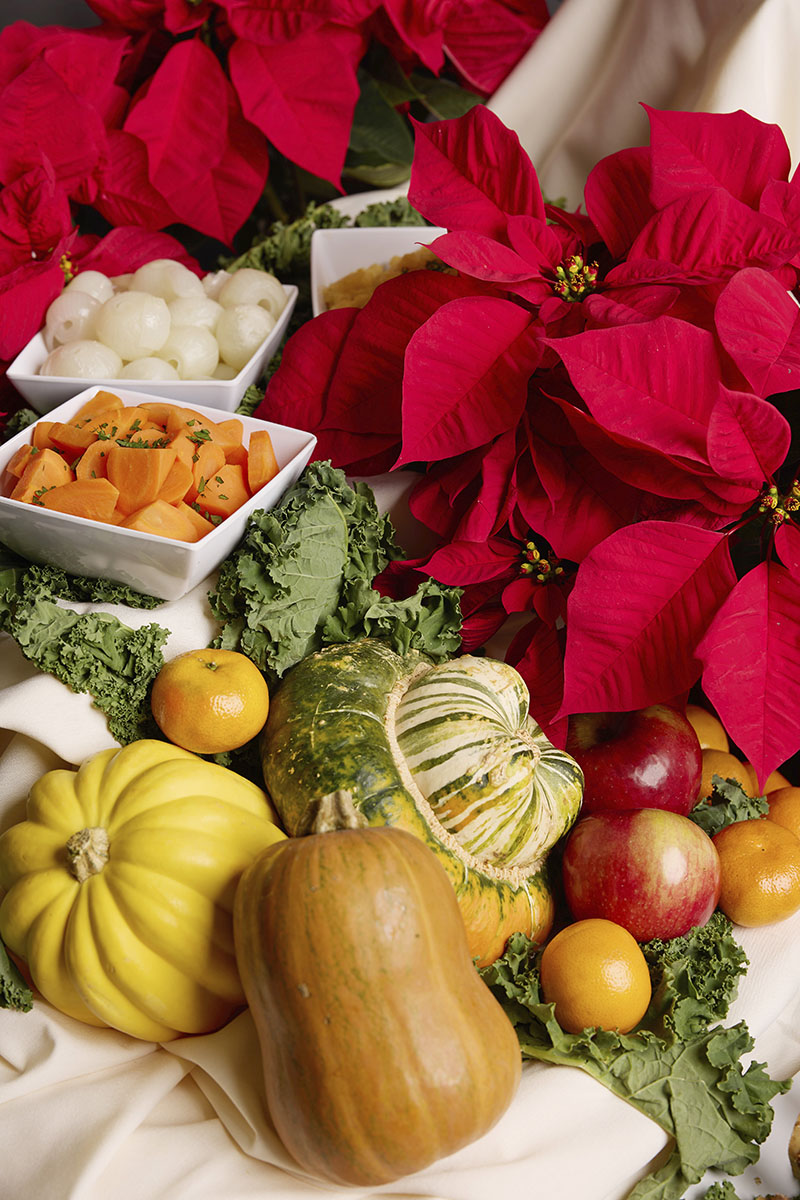
Streamline wine orders, Riley suggests, by purchasing larger, 1.5-liter bottles of popular wines—Cabernet Sauvignon for red and Sauvignon Blanc for white, for instance—and smaller, 750-liter (traditional-sized) bottles of more expensive, or boutique selections. It’s a good way to please everyone without breaking the bank.
If your holiday fete includes a specialty cocktail, you can eliminate the hassle of making each drink over and over again by batching the mixer, Riley says. “Make a pitcher at first,” he says. “I pour the liquor in each drink. I don’t batch all the liquor into that.” This way, he says, drinks can be made nonalcoholic, for anyone who isn’t drinking, or for children. It also means that any leftover mixer is kept separate from leftover spirits.
When it comes to appetizers and hors d’oeuvres, Riley stresses the importance of preparation. “Cook your hors d’oeuvres ahead of time, just a little bit,” he says. About an hour before the event, Riley suggests cooking hors d’oeuvres off, and then reheating them just before serving. “Five minutes in the oven will give it a nice temperature—at 350 degrees. Maybe seven minutes on some things. It depends on the thickness,” he says.
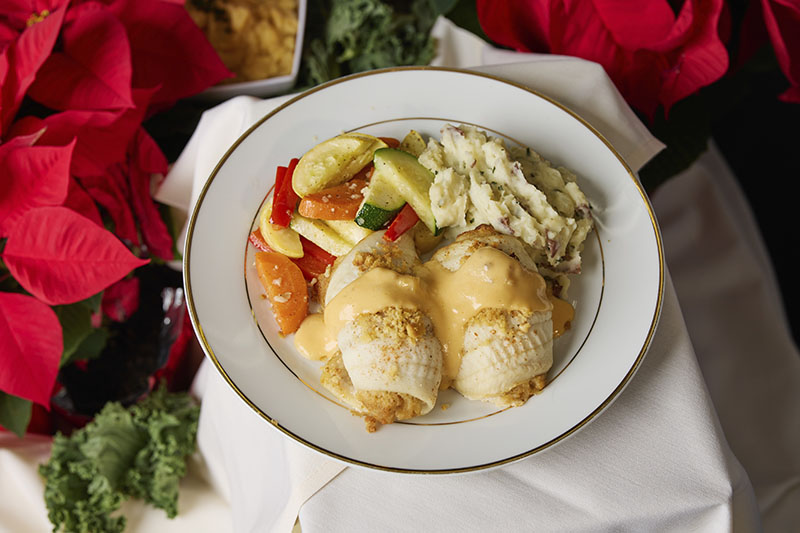
Main courses can also be cooked far earlier than many people realize, Riley says. “You want that meat to rest for a good hour,” he says of holiday roasts. “You cut into a prime rib 15 minutes after it’s cooked, all that juice runs right out.” Riley says that they cook their meat slowly, at about 300 degrees, for longer periods of time—closer to two hours—seeking a desired temperature of medium-rare.
If the meat is room-temperature, that isn’t a problem, either. Roasts, he says, are typically served with a sauce: demi-glace, Bordelaise, Béarnaise, or even a traditional gravy. The hot sauce on the side is more than enough to keep the meat on the plate warm. (Hosts can always warm plates in the oven, too, assuming they have oven-safe plates; just note that bone China cannot be placed in the oven.)
Many side dishes can be cooked in advance—or, at the very least, prepped in advance—which is a good way to take some of the burden off the work of the host, and the oven, Riley says. “You can prepare your vegetables ahead of time,” he says. “Just peel them and get them ready. Put them in pots with water. You can put them in a cold area.”
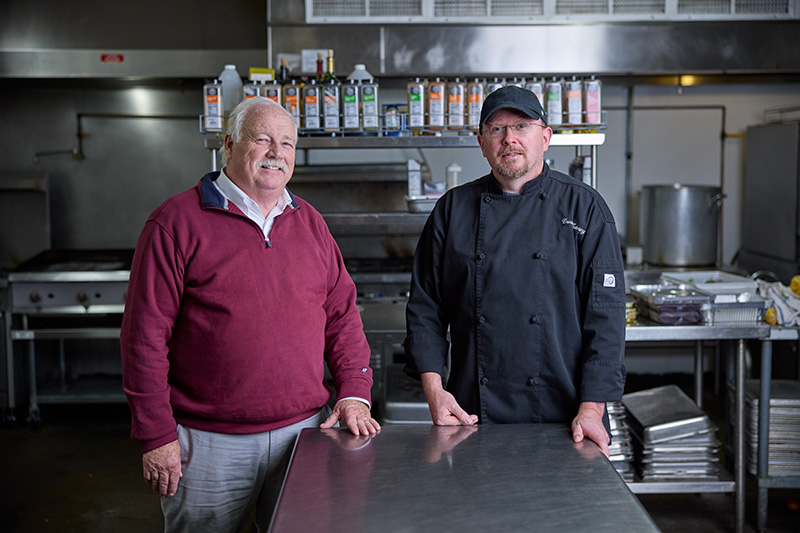
Although vegetables like potatoes will turn black if peeled and exposed to air, they can be held for several days if peeled and covered with very cold water. Turnips, carrots, sweet potatoes, and yams can even be mashed ahead of time and reheated the day of the event, Riley says (potatoes are better mashed the day of).
There is, of course, also dessert. “Depending on the weather, I like meringues,” Riley says. The egg-white-based desserts can be made in advance (the Pavlova, the cousin of the meringue, is another dessert that can be made at least one day before any large-scale event). The traditional holiday pie, too, can be made ahead of time and held either at room temperature or in the refrigerator, he says, depending on the filling; dairy-based pies must be refrigerated, but many fruit-based pies can be left covered on the countertop for one or two days prior to an event. Cookies, brownies, and even some cakes hold up well. Plastic wrap, aluminum foil, and plastic containers can keep them tasting fresh.
But no matter what tips you use to hack the holidays this year, take Riley’s central theme and run with it. “The key thing is to prepare,” he says. The rest is a piece of cake—or, if you prefer, pumpkin pie.

